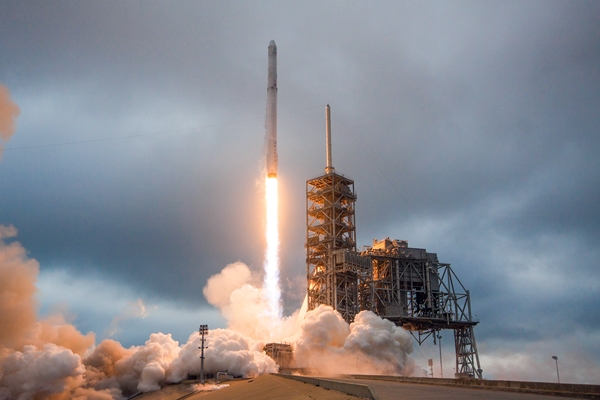20 February 2017. Yesterday’s SpaceX launch from NASA’s Kennedy Spaceflight Center includes a shipment of adult stem cells to test their growth and proliferation in weightless conditions. These stem cell experiments originated in the lab of physician-scientist Abba Zubair at the Mayo Clinic in Jacksonville, Florida.
Zubair and colleagues study stem cells for regenerative medicine, particularly as treatments for cancer, stroke, and other disorders. One obstacle to greater use of stem cells is the difficulty producing adequate numbers for treatments. Some therapies require as many as 200 million stem cells, which under current practices can take weeks to produce. Some simulations, however, suggest stem cells can reproduce quickly and reliably in microgravity, or weightless conditions, maybe even comparable to their environment as they develop in the body.
An early use of higher-speed stem cells could be treatments for stroke. “Stem cells are known to reduce inflammation,” says Zubair in a Mayo Clinic statement. “We’ve shown that an infusion of stem cells at the site of stroke improves the inflammation and also secretes factors for the regeneration of neurons and blood vessels.”
But the slow expansion of stem cells is holding back development of these treatments. “It’s further complicated, because some patients are unable to donate cells for themselves,” Zubair adds, “and, sometimes, there aren’t enough donors who are a good match, as sometimes occurs for minorities.”
Zubair’s lab provided stem cells derived from human bone marrow launched yesterday for experiments on board the International Space Station. Crew members on the space station will measure growth and proliferation of the cells, and record their characteristics while in microgravity, compared to a similar collection of cells that remains on earth. If the evidence supports the hypothesis that stem cells proliferate faster in microgravity, it could eventually lead to development of a commercial-scale bioreactor in space.
The experiments are also looking for qualitative changes in stem cells under microgravity, where crew members report on molecular alterations. “We’ll be looking to see if there are genes activated in microgravity and analyzing the stages of the cell cycle,” Zubair notes. “We may discover proteins or compounds that are produced that we can synthesize on Earth to encourage stem cell growth without having to go to microgravity.”
Space station crew members will also report on the feasibility of growing stem cells in microgravity. If the crew can readily conduct these initial tests, the prospects for expanded and eventually commercial stem cell production improve. Increasing numbers of missions and commercial-scale facilities in space could make stem cell production in microgravity cost effective.
Once experiments are completed, the stem cells will then be returned to Earth, where the Mayo Clinic team will evaluate the cells for functionality and safety as treatments. Zubair tells more about the project in the following video.
- Spacecraft Returns with Space Station Research Samples
- Report from Maker Faire: Plastic Recycling Made in Space
- Collaboration Explores Humanitarian Satellite Applications
- NASA to Test Hand-Held DNA Sequencer in Space Station
- Astronauts to Eat Space-Grown Vegetables
* * *


 RSS - Posts
RSS - Posts
You must be logged in to post a comment.